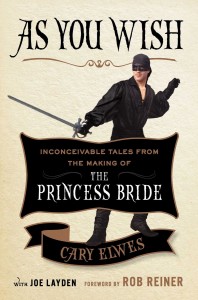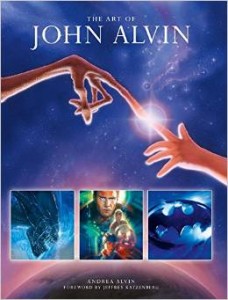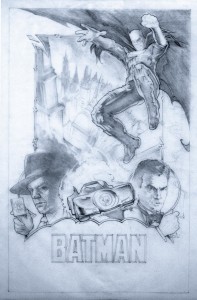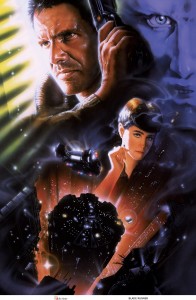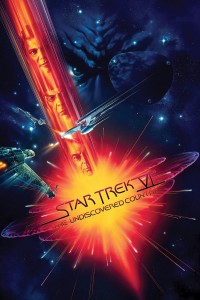Dear White People: Interview with Writer/Director Justin Simien
Posted on October 15, 2014 at 3:55 pm
“Dear White People” is fresh, provocative, timely, and very funny. In the tradition of “Higher Learning” and “School Daze,” it is the story of four black students at an Ivy League college, all making different choices about adapting or challenging the biases and privilege of their classmates. At the center of the story is Sam (Tessa Thompson), an outspoken woman whose program on the school radio station is called “Dear White People.” Sam is unexpectedly elected to be the head of the house that was once exclusively for black students but now has been opened up to everyone through a school-wide program of color-blind placement. Meanwhile, a white fraternity is holding a party where attendees come in exaggerated and racist “ghetto” costumes. Over the final credits, we see photos from real-life “ghetto” parties on college campuses.
Writer/director Justin Simien sat down with a small group of journalists to talk about the film, and he was as thoughtful and engaging as his film.
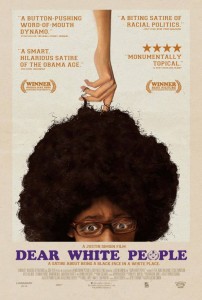
“I think college is such a great microcosm for a larger American experience. And particularly this sort of vaguely Ivy League college. I wanted to deal with the aspect of America where everyone is sort of cutthroat and has ambition and wants it. I wanted my characters to be in that particular environment because there are a lot of black places and white places. For me, I left my home community. I went out into the world to do something in particular and I found myself always being the only black person in the room. And so I wanted to find a way to create that in a microcosm where we could get into all the issues, Which was just easier to do at the school level. And some of my favorite movies do that. “Fame” and “Election,” and “School Daze” really effectively uses school as microcosm and for me there was just no other place to set the movie really. And also I started the movie in college so it was sort of obvious thing. And as I kind of continued to be the only black person in the room, as I left college it progressed in my professional life. It just still made the most sense.”
When he was in college, Simien began the film as “2%.” “I was in college and I was having a conversation at the black student union and my really good friend and I were musing like, ‘Are we friends with these people just because we are all black or because we would like them?'” That led to the first version of this story, influenced by director Robert Altman, which followed eight or nine characters through a year of college, as a way to talk about identity. “It was terrible! I thought it was funny in certain parts but film school doesn’t really prepare you to write multi-protagonist screenplays so I kind of kept working at it through the years and wrote other things and started life as a publicist. I always returned to it and I reworked it as a TV show and I reworked it as a different kind of screenplay.” The script evolved over time to respond to changes in history and culture. “Obama had been elected president and this ‘He’s really from Kenya’ crap started. The post-racial bubble of America began to burst a bit and that’s when the movie became ‘Dear White People.’ That’s when it really became more about the American black experience at large as I understand it and that’s when I started to take more of a satirical tone, that’s when it really began to be about something. And so I just worked that script with every possible waking hour that I had. And I took it to a workshop, and we all truly loved it and that’s kind of really the beginning of what ‘Dear White People’ is now.”
Originally, there was a blackface party in the script and he took it out as too over-the-top. But then news stories about actual parties on college campuses began “my kind of rabbit hole research experience where like I realized how prevalent the blackface parties were and was just kind of interesting that in the Facebook age, they are now just bubbling up to the mass culture. And so for me, that was really just a really truthful but visceral way to kind of re-create the experience of what it feels like to see myself as interpreted through the eyes of a culture that doesn’t know anything about me. So especially when it comes to commercial black culture, the stuff that sells T-shirts and jeans and shirts and music and whatever, white people are actually setting, creating what black culture is in order to sell products. And often times that culture is confusing, it doesn’t represent me and it’s kind of the viscerally offensive. Nothing articulates that feeling quite like a black face party; people who in their minds are either celebrating or I don’t know what they think they are doing per se but it just feels so oppressive to see that imagery. And it was something that happened. So to me, it was just, as a storyteller, it was like the perfect storm of something that really happens and something that perfectly articulates without words, the feeling that I am trying to get across in that moment.”
With all of the focus on identity and authenticity, it was an interesting choice to have the central character be a woman. “I don’t think there was a part in this where I sat down and decided she was going to be a woman for any particular reason. Sam White just came out as Sam White and that’s the truth. And what I wanted to do with her character is sort of create someone who authentically had an opinion, had a point of view who then became a spokesperson and then that identity became too constricting for her. She was angry at a certain point in her life and she communicated that and now she has always be that in order to hold the movement. And that’s kind of what I wanted to talk about; her character. I can’t really say why but I knew that I wanted, for all the characters, for you to think that you knew who they were at first glance and as you discover more about them, to be surprised at the layers underneath that and the things that sort of went into the creation of that person.” In one funny moment, we find out that Sam listens to Taylor Swift. He has especially enjoyed having black audience members confide that they, too, have some secret “not cool” favorites.
Simien says that all of the characters are aspects of his own feelings and experiences. “I would say that I have been all of them at some point. I have done those things to get along as a survival tactic. I have sort of clinged to no identity. I have sort of hinged everything on my black identity like Sam and sort of tried to be the correct black male like Troy. And I have tried to sort of like use my blackness to get ahead like Coco.”
Hair is very important in the film, as indicated on the poster. All of the black characters change their hair in some way during the course of the movie. “There are so many angles to black hair. Like I remember when I had had that was never as big as Lionel’s fro but it was fro-ish I would say. That line about, ‘It’s a black hole for white people fingers’ was really true. It was like, ‘Get out of my hair please!’ But then there is also like curiosity about hair extensions and weaves and like all like. Black hair just no matter who you are whether it’s natural or whether it’s not natural, whatever, it’s an area that is ripe for micro-aggression and identity. And because African-Americans feel the pressure of being held to a standard of beauty that’s more European. It’s also rich for specifics of racial identity. Like should you wear hair natural or should you straighten it? That becomes like a very racially charged decision for people and it divides us internally and it’s just a interesting rich topic. And so I think for that reason subconsciously frankly it all seeped in. But even with where Lionel nets out with his hair and I won’t say it in case there is anyone who hasn’t seen the film, it was almost a statement for me too because to me it’s really about being authentic to yourself. There are a lot of people walking around with fro’s and natural hair do’s and it has nothing to do with the way they see themselves. That can equally be as about fitting in with a trend or a standard of beauty as wearing your hair straight. And for me, the characters were all battling to figure out how to be authentic, not to be black or authentically black because that’s a moving target that isn’t real. Authentic to themselves because authentically black is, it’s fiction, it’s an illusion. There is no such thing.”
Toye Adedipe was the costume designer who helped create the look of the characters. “It takes place in the heightened reality,” Simien said. “I love the theatricality of film making. I just love movies that immediately tell you that you are watching a movie. And the clothes had a big part to play in that. And because we were dealing with the archetypes and we were dealing with the hyperreality, the hyper style, it was important to me that the clothes reflect that. The black hipster look is something that hasn’t really been in the movies since maybe early, early Spike Lee. I thought would be really cool to showcase that in the film and also at the same time, say things about the characters. And so just like every piece of art in the movie, the clothes were just as much a character that anything is because we were really creating this world. There were lots of references. ‘Well, today Sam is Lisa Bonet and tomorrow she’s going to be Annie Hall and then she was going to be Angela Davis.’ We had that kind of conversation about all of the characters. Because we were thinking about identity and not to get too deep but we are in a postmodern age of filmmaking and everything is very referential and their identities a very referential so it was fun to sort of pull from things that already existed out there in order to create their looks. The only exception to that was Lionel who really pulls from nothing. He is certainly a lot of fun too. To make someone who had no fashion sense was really fun because Tyler is very stylish and Toye is very stylish and that was kind of fun too creating his look, his sort of non-look together to tell the story of his character.”
Next for Simien is a Dear White People book and a possible television series.

